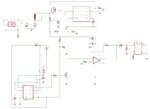ants
Full Member level 4
I use an opamp that requires a heatsink, now I want to put it in a confined space and use a package that has the board as a heatsink, but don't have much space on the board.
I'm looking for some general advice on what to do, for example can I use the copper of the ground plane as part of the heatsink? My circuit includes a 555 timer and I'm wondering if the heating would affect the capacitance of the board and thus the frequency?
Thanks,
Ant.
I'm looking for some general advice on what to do, for example can I use the copper of the ground plane as part of the heatsink? My circuit includes a 555 timer and I'm wondering if the heating would affect the capacitance of the board and thus the frequency?
Thanks,
Ant.

